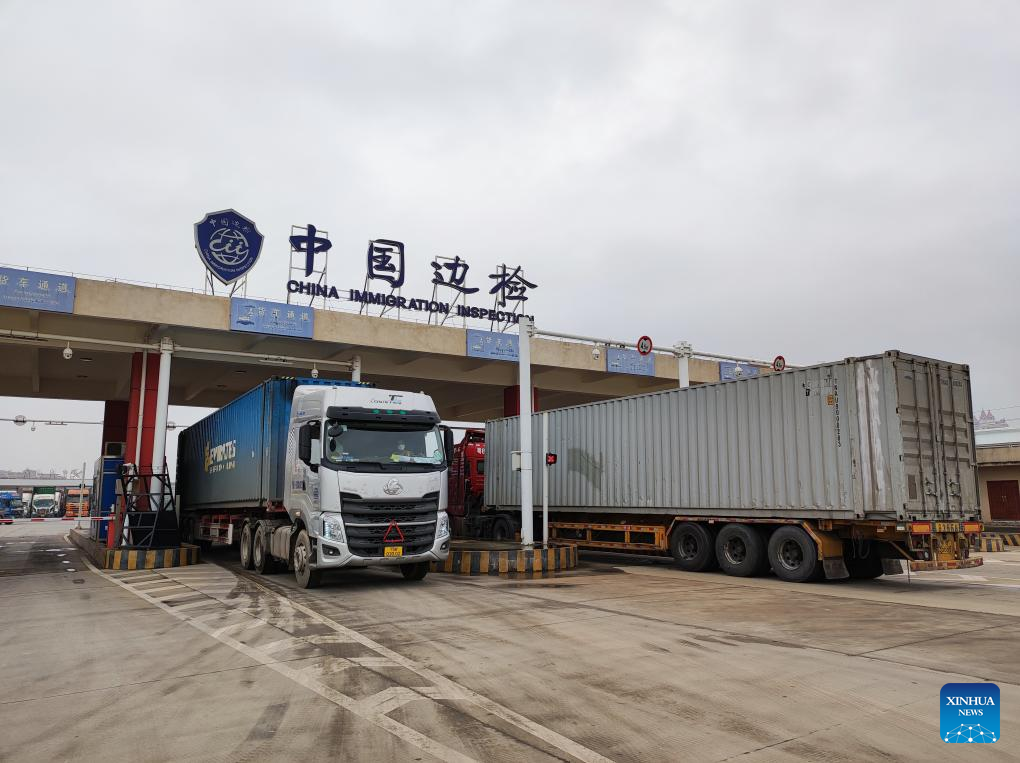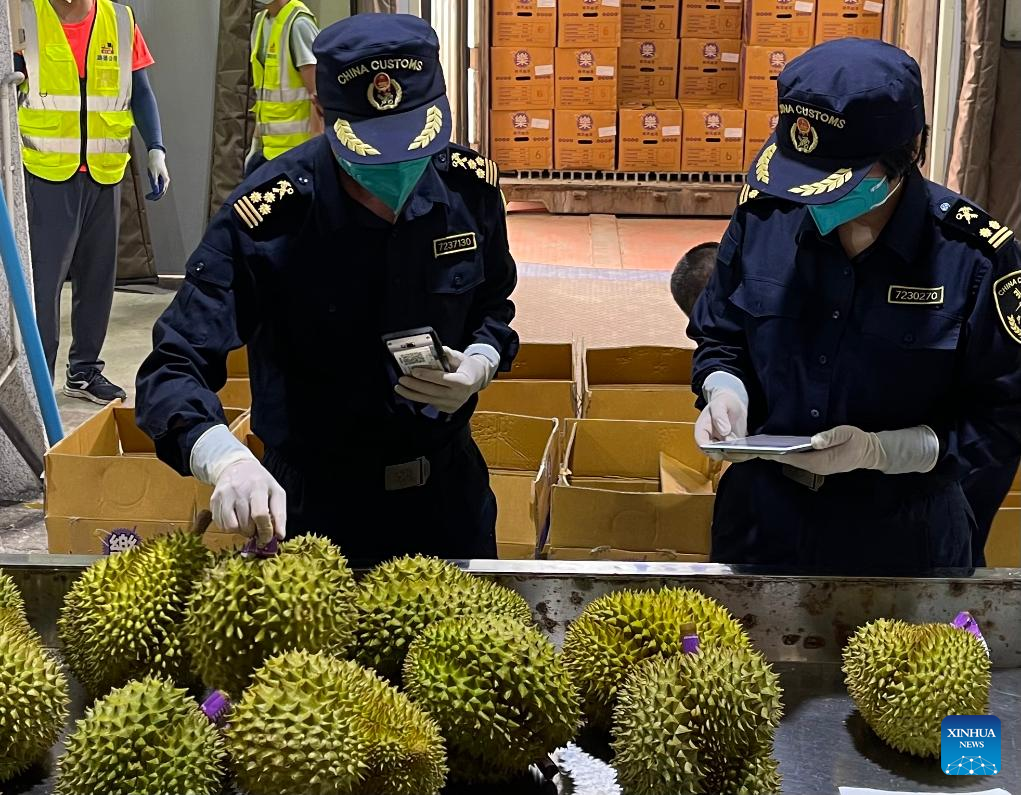Economic Watch: Riding RCEP momentum, China-ASEAN industrial cooperation continues to deepen

This photo taken on April 12, 2023 shows cargo trucks passing through an immigration inspection checkpoint at Dongxing port in Dongxing, south China's Guangxi Zhuang Autonomous Region. Boosted by the Regional Comprehensive Economic Partnership (RCEP) agreement that entered into force on Jan. 1, 2022, industrial cooperation between China and ASEAN has continued to deepen over the past two years, contributing to the regional economic development. (Xinhua/Zhu Lili)
NANNING, Jan. 9 (Xinhua) -- During the 2024 New Year holiday, a bustling scene unfolded at Youyi Pass, also known as Friendship Pass, situated in the border city of Pingxiang in south China's Guangxi Zhuang Autonomous Region, as trucks from both China and Vietnam formed queues for customs clearance.
Shipments of agricultural products like durians and mangosteens from the Association of Southeast Asian Nations (ASEAN) countries were streaming into China through the border port. In the opposite direction, trucks laden with electronic components, machinery and equipment were en route to ASEAN countries.
Boosted by the Regional Comprehensive Economic Partnership (RCEP) agreement that entered into force on Jan. 1, 2022, industrial cooperation between China and ASEAN has continued to deepen over the past two years, contributing to the regional economic development.
As the world's largest free trade agreement, the RCEP includes 10 ASEAN members, China, Japan, the Republic of Korea, Australia and New Zealand. The 15 states' total population, gross domestic product and trade all account for about 30 percent of the world total.
According to China's General Administration of Customs, ASEAN remained China's largest trading partner in the first 11 months of 2023, with the total trade between the two sides reaching 5.8 trillion yuan (about 816.9 billion U.S. dollars), up 0.1 percent year on year.
In July 2022, fresh Vietnamese durian was officially allowed to enter the Chinese market, following which the Youyi Pass, the largest fruit import and export port between China and ASEAN, witnessed a massive influx of the tropical fruit.
According to Wang Zhengbo, president of a Guangxi-based supply chain management company, business opportunities for collaboration between China and ASEAN have continued to grow in recent years, boosting the demand, quantity and variety of goods in cross-border trade as well as marking a continuous increase in the freight volume.
The company has carried out strategic cooperation with orchards and packaging plants in Vietnam, and has signed cooperation agreements involving nearly 3,000 hectares of durian orchards to meet the demand in China.
After the RCEP agreement took effect, eight new fruit varieties from ASEAN countries have been approved to enter China, including bananas from Myanmar, longans from Cambodia and durians from Vietnam.
In the first three quarters of 2023, the Youyi Pass has seen a continuous increase in the import of agricultural products, with a value of 19.66 billion yuan, up 413.8 percent year on year.
Leveraging its advantages in location, transportation policies and resources, Guangxi has integrated the construction of the China-ASEAN industrial cooperation zone based on the existing development zones, free trade zones and industrial parks in seven cities, including the regional capital Nanning and the city of Chongzuo.
Relying on the raw materials from Southeast Asia, a processing industrial park is under construction in Pingxiang, the border city under the administration of Chongzuo.
According to Wang Shujuan, chairperson of Guangxi Zhongguo Industrial Co., Ltd., which invested in the industrial park, the first phase of the project, with a total investment of about 150 million yuan, commenced operations in November 2023, mainly producing lime jam. The annual output value is expected to surpass 300 million yuan once the project is fully operational.
With the industrial chains of China and ASEAN becoming increasingly complementary, enterprises in regions like Guangxi are ushering in huge market opportunities.
In recent years, construction machinery made by Guangxi Mesda Group Co., Ltd. have entered the markets of Thailand, Indonesia, Cambodia and other ASEAN countries, and have been well received by local customers.
"Many ASEAN countries are undergoing rapid industrialization and have a great demand for China's advanced technology, products and capital. As China-ASEAN regional economic integration progresses, we are fully confident that Chinese enterprises can gain a foothold in the ASEAN market," said Huang Kanghua, chairman of the company.
With the advancement of the Belt and Road Initiative and the thorough implementation of RCEP, the industrial chain between China and ASEAN will be further integrated, and exchanges and cooperation between the two sides will take a new step forward, said Zhai Kun, a professor at the School of International Studies, Peking University.

Custom staff members check imported durians at the Youyi Pass, also known as Friendship Pass, in Pingxiang, south China's Guangxi Zhuang Autonomous Region, on April 21, 2023. Boosted by the Regional Comprehensive Economic Partnership (RCEP) agreement that entered into force on Jan. 1, 2022, industrial cooperation between China and ASEAN has continued to deepen over the past two years, contributing to the regional economic development. (Xinhua/Nie Xinyu)


